Flies
{{start}}
{{end}}
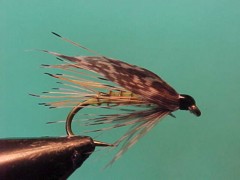
{{+1}}Bredbo{{-1}}
{{start}}
o here you have a fly that fishes well as a formidable traditional river wet fly is now vying for a position as a very effective middle dropper for loch style fly fishing ... and its only a couple of hundred years old. One of my favourite flies in that situation is a Dunkeld and over the last two seasons I have found the Bredbo to be a very comfortable alternative particular in summer months when fish are turned onto the wing colour of the dominant local grass hopper the yellow winged hopper.{{end}}
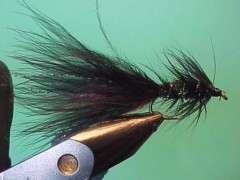
{{+1}}Sparkle bugger{{-1}}
{{start}}
Woolly buggers and their variants would have to be close to the quintessential wet fly. This woolly bugger version is one of my favourate late season still water flies.{{end}}
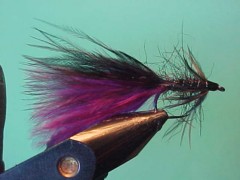
{{+1}}Tassi bugger – Chatto’s version{{-1}}
{{start}}
I was introduced to this variation in the lead up to the 2002 Tasmanian One Fly which by chance I won. Whilst I was not comfortable enough to use this fly in that contest I have used it many times since to great effect.{{end}}
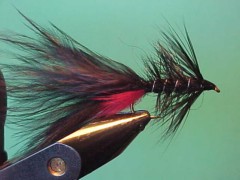
{{+1}}Mark II woolly bugger{{-1}}
{{start}}
The MK 2 woolly buggers evolved from standard black and olive woolly buggers as a fly that would imitate an American frog that had bright red between its hind legs. The red is a great trigger point and I find the MK2 as a great generalist search pattern. In southern climes the hot spot is tied in any of the 'roe' colours and is widely accepted as one of the best early season search pattens.{{end}}

{{+1}}Skirted woolly bugger – Chatto’s original{{-1}}
{{start}}
Whilst not tied to imitate any natural food source it's a very buggy looking fly with heaps of trigger points including the marabou tail, the soft body and front hackles as well a the skit itself. In particular I like to incorporate blood red or orange skirts which are suggestive in the case of a red skirt as bleeding from around the base of the tail or the claws depending on what the fly is taken as or in the case of an orange skirt as a fish roe.{{end}}
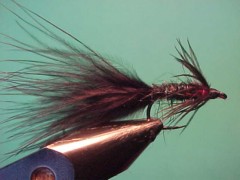
{{+1}}Bibio bugger – Chatto’s original{{-1}}
{{start}}
There are a few flies that I have absolute confidence in and consequently have no hesitation in tying them on if I am in unknown territory and am up for a bit of prospecting. This fly is really a merging of two of them and it is so consistent that its has earned its own place amongst my top 10 or so trout flies. The two flies that were merged to form this fly were of course the bibio and the standard black woolly bugger. Whilst the bibio still holds its own place in my top 10 or so trout flies this bibio bugger has displaced the standard black woolly bugger.{{end}}

{{+1}}Mini woolly buggers{{-1}}
{{start}}
In recent years I have found that other than the traditional woolly bugger of around 50 mm in length there is also a demand for very small woolly buggers. In fact I would go as far as to say that in most of the fisheries that I haunt 'mini woolly buggers' of from 25 mm to 30 mm in length are often more effective than the larger versions on which they are based. I have narrowed down the mini woolly bugger selection that I carry to just brown, black, black with a red thread head and olive versions.{{end}}
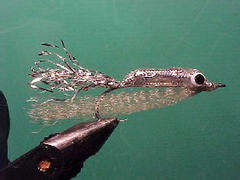
{{+1}}Superhair rattler{{-1}}
{{start}}
This is a good alternative to the zonker rattler particularly for estuary species. It lends itself to fishing on a fast sink line and a jerky active retrieve with plenty of stops. It's also a good idea to count the fly down so that you can identify what depth they are holding at.{{end}}
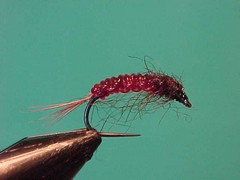
{{+1}}Flat knitted nymph{{-1}}
{{start}}
Because the nymphs of many mayflies and caddis spend a good part of their life cycle living under rocks in both still and running water its not surprising that many have taken on a relatively flat form. This knitted grub has a relatively flat body mimicking many of the naturals and also has plenty of structure on the body suggesting the various body segments.{{end}}
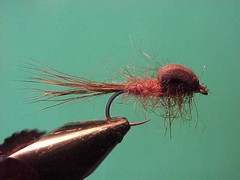
{{+1}}Floating nymph{{-1}}
{{start}}
This nymph applies elements of each of these two principals of science. The materials are all as buoyant as possible. This includes the tail which is deer hair and of course "hollow' and the closed cell foam which has tiny bubbles of air trapped within its membrane. It also has a reasonable "foot print" made up of the tail, and teased out seals fur body and thorax. Seals further adds a further benefit to the fly in that with a couple of brisk false casts it easily sheds water.{{end}}













